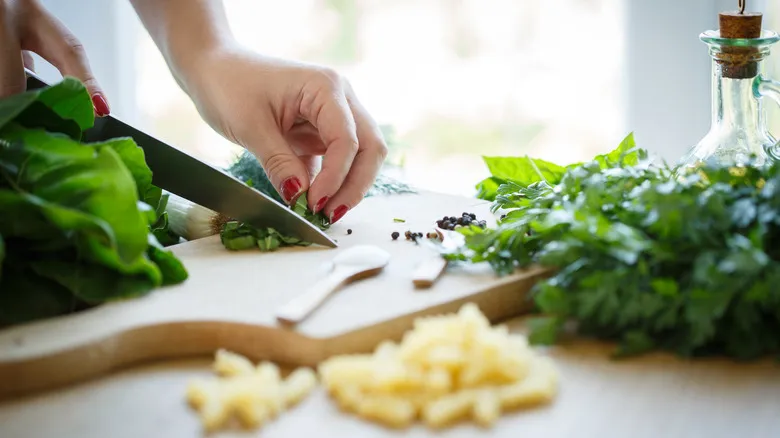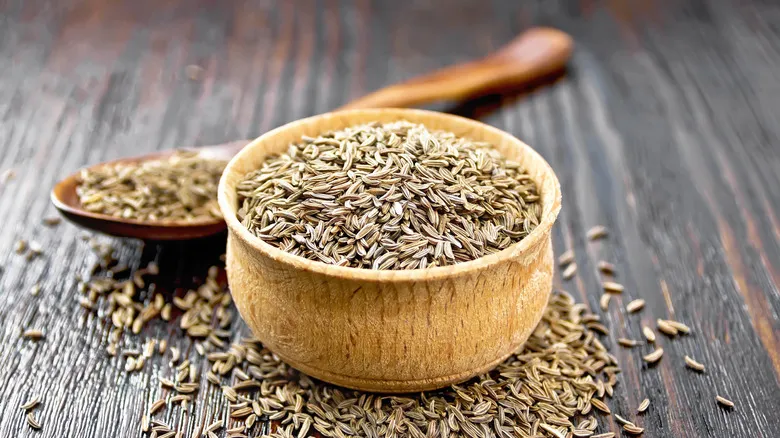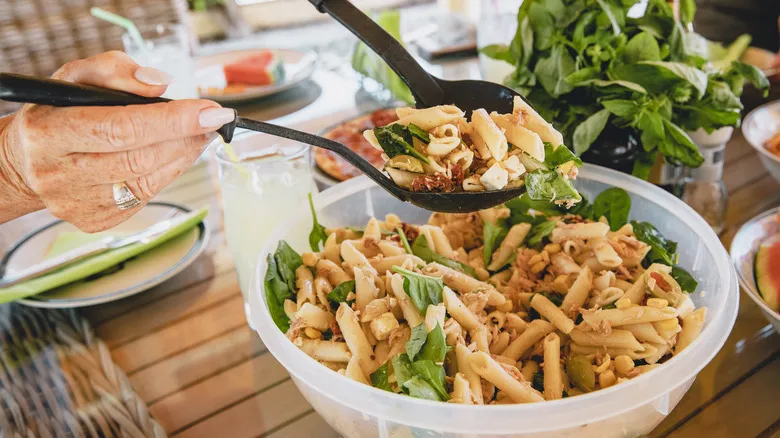Stop, stack, and roll

Gordon Ramsay recommends arranging basil leaves by stacking them, starting with the largest leaf at the bottom and layering the smaller ones on top. Then, roll the stack tightly into a cylinder, which allows you to chop several leaves simultaneously. This method, known as chiffonade, is particularly effective for herbs like basil and produces thin, ribbon-like strips.
To chop, firmly hold the rolled basil on the cutting board and make crosswise cuts with a sharp knife. Ramsay advises protecting your fingers by tucking them in so that only the first knuckles are visible. Begin at one end of the rolled basil and slice towards the other end. This will yield finely chopped basil.
For the best flavor and color, use chopped basil immediately, as it tends to lose its freshness quickly. If you’re not using it right away, store it in an airtight container in the refrigerator, but be aware that its quality will diminish over time. This technique can also be applied to other leafy vegetables and herbs, such as spinach, collard greens, and mint.
Why bruising is bad

This applies to any fragile herb: Avoid bruising it. It's surprisingly easy to do. Simply bending fresh herbs can crease them. A study published in Horticulturae reveals that the cells in the leaves, which contain all the flavor compounds, can easily rupture, releasing their taste and aroma.
When basil leaves are bruised, they can also change color. The bright green of fresh basil may darken or develop brown spots where the leaves have been harmed. Cut basil tends to oxidize quickly as well. This not only diminishes the herb's visual appeal but also results in a flavor that is rather lackluster.
To preserve the integrity of the cells and enhance the flavor of basil-based dishes like pesto pasta and tomato soup, it's important to handle the herb carefully. Additionally, the heat from certain dishes can break down herb cells, releasing their flavor into the food. So, take Gordon Ramsay's advice and roll your basil; this technique will help protect the herb while you chop.
Recommended

Everything You Need To Know About Cooking With Cumin

11 Celebrity Chef Tips For Elevated Pasta Salad

The Canned Tomato Problem You Can Solve With Kitchen Shears

Old Onion Sacks Will Get Your Dishes Cleaner Than Ever
Next up

